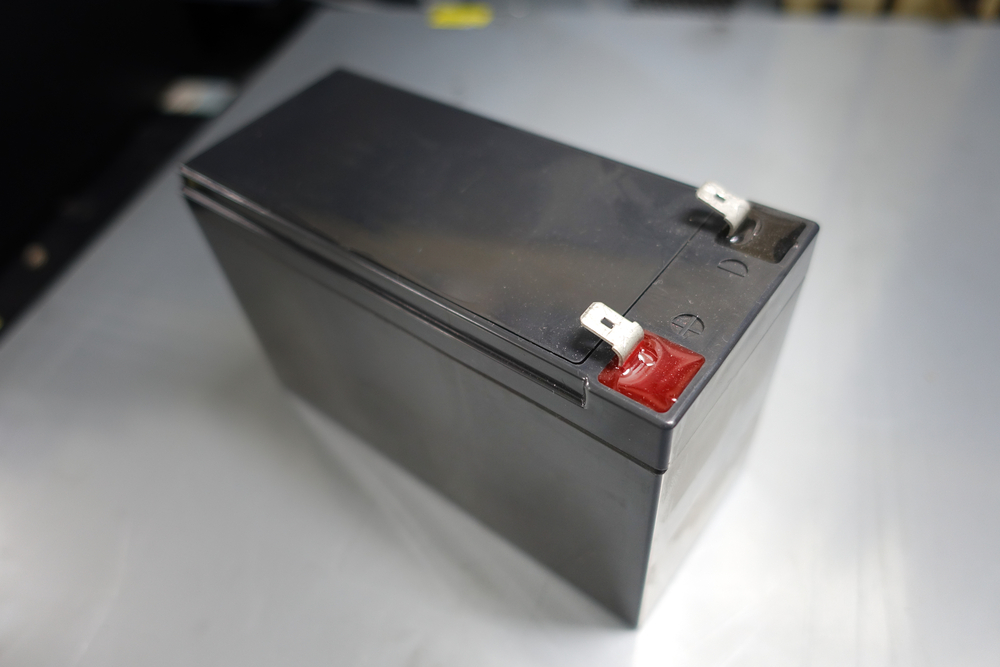
How to Properly Maintain and Extend the Life of Your CSB Battery
May 8, 2025 7:31 pm Leave your thoughtsCSB batteries, a brand recognized for its high-performance sealed lead-acid (SLA) batteries, are commonly used in various applications such as security systems, emergency lighting, uninterruptible power supplies (UPS), and more. These batteries provide a reliable power source, but like any other battery, they require proper care and maintenance to ensure longevity and optimal performance. Proper maintenance can significantly extend the life of your CSB battery, saving you money and avoiding unnecessary replacements. In this guide, we will explore essential CSB battery care tips and best practices to keep your battery working efficiently for years.
CSB Battery Technology
To properly maintain and care for a CSB battery, it’s essential to understand the underlying technology. CSB batteries are lead-acid batteries, which means they contain lead plates submerged in an electrolyte solution of sulfuric acid and water. This reaction generates power, but over time, the materials inside the battery undergo wear and degradation. The battery’s performance is influenced by several factors, including temperature, charge cycles, and maintenance practices. Understanding these elements is the first step in optimizing the lifespan and reliability of your CSB battery.
The lifespan of a CSB battery can typically range from 3 to 5 years, depending on factors like usage, environmental conditions, and maintenance. Regular upkeep can help keep the battery running for the longest possible time, avoiding premature failures or costly replacements.
Regular Charging and Proper Voltage Levels
One of the most important CSB battery care tips is ensuring that the battery is consistently charged within the correct voltage range. Lead-acid batteries like CSB batteries are designed to work within specific voltage parameters. Overcharging or undercharging can reduce battery life and performance.
To maintain your battery, it’s essential to use a high-quality, reliable charger that is designed for SLA batteries. Overcharging can cause the battery to overheat, leading to the evaporation of the electrolyte, which results in reduced battery capacity and shortened life. On the other hand, undercharging can cause the battery to develop sulfation, a process where lead sulfate crystals form on the plates, impairing the battery’s ability to charge fully.
It’s important to regularly monitor the battery’s voltage, especially if it’s in a critical application like a UPS or emergency lighting system. For optimal results, aim to keep the voltage within the manufacturer’s recommended range, typically between 2.2 and 2.3 volts per cell for CSB batteries. If your battery is not fully charged, use a suitable charger to bring it back to the proper level.
Keeping Your Battery at the Right Temperature
Temperature plays a crucial role in the performance and lifespan of your CSB battery. Extreme temperatures, whether too hot or too cold, can have a detrimental effect on the battery’s efficiency and longevity. CSB batteries are designed to operate within a certain temperature range, usually between 20°C (68°F) and 25°C (77°F).
If the battery is exposed to high temperatures, above 30°C (86°F), the electrolyte inside the battery may evaporate faster, leading to a reduction in capacity and an increased risk of failure. On the other hand, if the temperature drops too low, the electrolyte can freeze, causing internal damage to the battery. If you are storing or using your CSB battery in an environment that experiences extreme temperatures, consider adding temperature-controlled enclosures or systems to help regulate the conditions.
In addition to temperature extremes, avoid placing your battery in direct sunlight or near heat sources such as radiators, stoves, or industrial machinery. These heat sources can cause the battery to heat up rapidly and shorten its life.
Ensuring Clean Terminals and Proper Connections
A key aspect of maintaining a CSB battery is ensuring that its terminals are clean and the connections are secure. Corrosion and buildup on the battery terminals can prevent proper current flow, reducing efficiency and causing issues with charging and discharging cycles. Corrosion on battery terminals is usually a white, powdery substance that forms as a result of the chemical reactions occurring inside the battery.
To prevent corrosion, periodically inspect the battery terminals and clean them with a solution of baking soda and water. You can use a small brush or cloth to remove any buildup gently. Once the terminals are clean, apply a thin layer of petroleum jelly or anti-corrosion gel to protect them from further buildup. It’s also important to ensure that the battery terminals are tightly connected to their corresponding leads. Loose connections can result in poor power transfer and cause overheating.
When connecting or disconnecting your CSB battery, always follow safety procedures. For example, when disconnecting a battery, always remove the negative terminal first to avoid any accidental short circuits. Additionally, avoid any contact between the terminals and conductive materials, as this could cause sparks or damage to the battery.
Regular Testing and Monitoring
In order to get the most out of your CSB battery, it’s important to test its performance regularly. Regular testing allows you to monitor the battery’s charge levels, voltage, and overall health. Some CSB battery models are equipped with built-in monitoring features that can alert you to potential issues, but in the absence of such features, you should perform manual checks.
Use a multimeter to measure the battery’s voltage and check it against the recommended levels. A healthy CSB battery should have a voltage close to its nominal value when fully charged. If the voltage is consistently low or fluctuates significantly, it may be an indication that the battery is aging or suffering from internal damage.
In addition to voltage testing, consider conducting a load test. This test involves applying a known load to the battery and measuring how it responds. A CSB battery that cannot maintain voltage under load may be failing and in need of replacement. If you’re not familiar with how to perform a load test, it’s best to have it done by a professional to avoid damaging the battery.
Lastly, it’s worth noting that batteries lose some capacity over time, even with proper care. So, while regular testing can help extend the life of the battery, it’s important to recognize that eventually, the battery will need to be replaced. Pay attention to performance declines, and replace the battery when it no longer holds a charge effectively.
Safe Storage Practices
Proper storage of your CSB battery is critical if it’s not going to be used for an extended period. If you plan to store the battery, make sure to keep it in a cool, dry place with a stable temperature. Avoid leaving the battery in areas with high humidity, as this can promote corrosion and other forms of damage. Additionally, ensure the battery is stored in an upright position, as this helps maintain the integrity of the internal components.
Before storing your CSB battery, make sure it is fully charged. Storing a battery in a discharged state can lead to sulfation, which can permanently damage the battery. Additionally, if the battery will be stored for several months, check the voltage periodically and top it off if necessary to maintain the charge. This process is known as “maintenance charging” and helps prevent the battery from discharging too much during storage.
If you’re storing the battery for an extended period, such as for use in an emergency system, it’s also a good idea to test it every 6 months to ensure it is still in good working condition.
Conclusion
Proper maintenance of your CSB battery is essential to extend its lifespan and ensure reliable performance. By following these CSB battery care tips and best practices, including regular charging, monitoring voltage levels, maintaining proper temperature, ensuring clean terminals, and safe storage, you can help protect your investment and avoid unnecessary replacements. Batteries are crucial components in many of our everyday systems, and taking the time to properly care for them will provide you with peace of mind and long-term reliability. By following these simple yet effective steps, you’ll ensure that your CSB battery continues to power your devices and systems efficiently for many years to come.
Need a Battery Store in Houston, TX?
At Texford Battery Co, we pride ourselves on being much more than just another battery specialist. We credit our seven decades of business growth and success to the unmatched service and expertise our team provides. Texford Battery Co is not simply a supplier – we helped pave the way for many innovations in the battery distribution industry that continue to keep prices competitive for our customers. Among them, we were a leader in the creation of the Battery Marketing Group in the 1970s. As a founding member of this national network of battery distributors and manufacturers, we are able to offer up to 10,000 of the industry’s top products to our customers at the lowest cost. Call us today!Categorised in: Batteries
This post was written by admin
